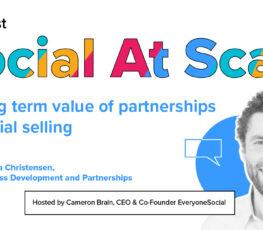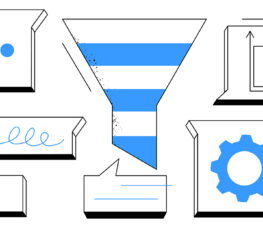LinkedIn Profile + Selling
There’s nothing worse than someone who reaches out to your LinkedIn profile only to spam you with lists of their prices and services.
As a sales tactic, it just won’t work.
But your LinkedIn profile can be an extremely valuable tool for your sales initiatives.
And it can be a very successful way of asserting yourself as the right choice for your customers and prospects.
All it requires is for you to make a decision about “what you want to be famous for,” which in itself can be quite a difficult decision.
True experts are not a jack-of-all-trades, they are a master of one. A clearly defined, narrow niche, a niche in which they can dominate.
Sourcing and sharing great content from others as well as writing some of your own is one important element of a successful social selling strategy. Engaging with influencers and your wider network on associated topics is also a vital part. Both of these are part of your active social presence.
Equally important, (or perhaps more important), is your static social footprint.
Your profile pages should be filled with words that describe what you do and why.
This is typically your LinkedIn profile (not surprisingly) and your Twitter profile too, along with any other profiles which are appropriate to your industry or the industries of your targeted companies.
Your LinkedIn profile counts.
Your LinkedIn profile is one of the, if not the most important pages on the internet for your personal brand.
Because of LinkedIn, unlike your own website, is an impartial forum for people to talk about you and your business.
And it is one of the most dynamic and fast-paced business environments with literally hundreds of millions of updates every day.
Not to mention, LinkedIn is usually a prospect’s first port of call when they’re looking for a new supplier, consultant or employee.
So, spend some time developing your LinkedIn profile.
Make sure that you understand, and many people don’t, the difference between “what you do” (your career history) and “why you do what you do” (your summary).
Be sure to include all of your past jobs, even those that no longer seem relevant. You never know when those old jobs might hold relationships which will unlock a whole world of opportunities today.
And never write in the third person (no matter what your Blue-chip company guidelines might say) because contrary to popular belief writing in the third person doesn’t make you sound professional, it just makes you sound pompous.
Fill everything out.
Finally, fill-out everything which you can. Education, employment history, causes (things which matter to you), publications, everything.
The more you fill out the more chance you have of creating that “common ground” on which you can build a relationship with your prospects.
Be the expert.
So, how important is your profile?
Well, it’s the most important thing you can do in terms of developing a personal brand.
It’s there as a footprint on the internet 24/7. It’s the platform you have to describe what you do and why and it’s the place where people can start to formulate an opinion about you and your competence.
No one makes decisions without Googling them first (and if “Googling you” leads nowhere…they simply won’t buy from you.
Googling is about minimizing risk, and if your competitors have information that’s one click away, they’ll choose them.
People want to know that you are knowledgeable about what you do and your personal brand is the most important tool you have to demonstrate this and the biggest influencer of this tool is your LinkedIn profile.















